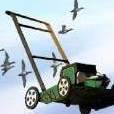Carb heat/electric fuel pump during run up
-
Members Online
- Jimmyred
- MatthiasArnold
- eman1200
- aviatoreb
- rbmaze
- Schllc
- mluvara
- Bolter
- mooniac58
- Yan X
- NickM20F
- ronr
- Caldwelldr
- Greg_D
- SoccerCA
- A64Pilot
- markejackson02
- redbaron1982
- Larry
- Skates97
- Greg Ellis
- Paul Thomas
- georgewdean1020
- M20F
- KLRDMD
- Kelpro999
- joemoriss
- moodychief
- Scott Ashton
- Mark Staggs
- Thedude
- Aaviationist
- ad5ut
- buddy
- HelofixR
- Grumpy
- Cody Stallings
- sc9roy
- rrbeck11
- 201Mooniac
- JoeFFG9
- N201MKTurbo
- rklems
- Jake@BevanAviation


Recommended Posts